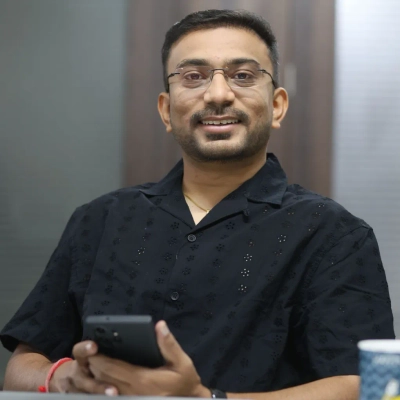8 Successful Initiatives for Improving Diversity in Technical Teams
Building diverse technical teams requires more than good intentions—it demands concrete strategies that challenge traditional hiring and development practices. Industry experts have identified eight proven initiatives that companies can implement to meaningfully increase diversity in their engineering organizations. These approaches range from rethinking job descriptions and talent pipelines to creating structured mentorship programs that support underrepresented groups.
Partner With Nontraditional Talent Pipelines
A high impact initiative was partnering directly with nontraditional talent pipelines and giving them the same weighted consideration as candidates from well known universities or large tech companies. I built relationships with bootcamp instructors, community college faculty, and nonprofit training programs that focused on adults making career transitions. We created a dedicated interview track for those applicants that centered on code reading and problem decomposition rather than whiteboard trivia. That effort brought in engineers who had worked in other industries before writing software and their range of perspective materially improved how we framed requirements. Team discussions became easier to ground because people naturally compared solutions to experiences outside tech. The result was fewer circular debates and more emphasis on observable user behavior. Shipping cycles accelerated because we converged faster on hypotheses instead of optimizing clever ideas that did not align with how journalists and authors actually work in the real world.

Build Processes That Require Different Perspectives
Many leaders think improving diversity is primarily a hiring challenge, a pipeline problem to be solved with new recruiting channels. While that's part of it, the real work begins after someone accepts an offer. A team can have people from all walks of life, but if the internal culture pressures everyone to think and act the same way to get ahead, you've only achieved a surface-level diversity. The true goal is to build an environment where different perspectives aren't just tolerated, but are actively sought and required for the team to succeed. This means looking past headcount and focusing on how decisions are actually made.
The most successful initiative I ever implemented wasn't a formal program, but a subtle change in our team's core problem-solving ritual. We moved away from the typical open-floor brainstorming session, which almost always favors the loudest or most senior person in the room. Instead, for any significant technical challenge, we mandated a "silent start." Every engineer had to spend the first 25 minutes of a meeting independently writing down their own proposed solution, including the "why" behind their approach. Only after everyone had documented their initial thoughts did we start discussing them as a group, giving equal airtime to each written proposal.
This small process change had a profound impact. I remember a specific project where we were stuck on a stubborn database performance issue. The senior engineers were all debating between two familiar, complex solutions. Meanwhile, a quieter, more junior engineer who had come from a data analytics background—not a traditional CS one—proposed a much simpler fix in her silent-start document. She suggested restructuring the query in a way none of the seasoned software engineers had considered. In a loud brainstorming session, her idea might never have surfaced. But as a written proposal, it was clear, logical, and ultimately, the right answer. It not only saved us weeks of work but also shifted the team's internal perception of where good ideas come from. We learned that creating space wasn't about asking people to speak up; it was about building a process where we were required to listen.
Prioritize Skills Over Traditional Pedigree
The most successful initiative we've had in making our technical teams more diverse has been to implement a "skills-first hiring framework" combined with remote-friendly recruitment. Rather than heavily weighting traditional pedigree or specific degree requirements, candidates were prioritized based on practical technical assessments, problem-solving approaches, and creativity in real-world coding challenges-many of which reflected issues we face in screen mirroring, such as latency optimization or device compatibility.
This shift opened doors to a more diverse pool of talent: geographically, culturally, and experientially. We started hiring skilled engineers from underrepresented tech communities who brought fresh perspectives and unconventional solutions.
The impact was profound: our team became more collaborative and innovative, discussions became well-rounded, and product decisions gained in breadth of user empathy. In due time, this translated into measurable gains: faster problem-solving cycles, more resilient infrastructure designs, and a greater perspective on how to make our app accessible and intuitive across different global markets.

Redesign Hiring Around Lived Experience
One of the most successful initiatives we took to improve diversity in our technical team was redesigning our hiring process around lived experience rather than traditional pedigree. Instead of filtering candidates by specific universities or years of experience, we focused interviews on real problem-solving, collaboration style, and empathy for end users.
We also invited diverse voices from across the company to join the interview panels. That single change immediately reduced unconscious bias. People felt freer to share unique perspectives, and we began seeing candidates who had previously been overlooked bring remarkable creativity to the team.
Over time, this shift changed how we worked together. Conversations became more curious and less defensive. We built better products because our team reflected the diversity of the people we were serving. The lesson was simple: diversity is not a quota to reach but a source of strength that only grows when you design systems to welcome it.

Create Hands-On Structural Mentorship Programs
Our most successful initiative for improving diversity in our technical teams was the Hands-on Structural Mentorship Program. The conflict is the trade-off: traditional recruiting targets abstract quotas, which often leads to a massive structural failure because candidates from non-traditional backgrounds lack the established industry network to secure initial high-value positions. We needed to bridge the experience gap with a verifiable, structural commitment.
This program paired our most experienced foreman with candidates from underrepresented backgrounds—specifically veterans and women seeking heavy duty trade certifications. The program dictated a rigorous, paid six-month assignment where the candidate received hands-on, one-on-one training in all critical structural competencies—from complex flashing installation to thermal imaging analysis and safety protocol. This trade-off sacrificed the foreman's immediate billable time but guaranteed the development of highly specialized, loyal talent.
This initiative changed our team dynamics by securing verifiable structural competence within a diverse group. It proved that competence is a function of opportunity and discipline, not background. Performance improved because the mentorship program reduced the cost of hiring external, unproven technical staff, providing us with a predictable pipeline of high-quality, pre-vetted talent who were personally committed to the company's structural integrity. The best way to improve diversity is to be a person who is committed to a simple, hands-on solution that prioritizes verifiable competence through structural mentorship.
Invite Non-Technical Employees to Observe Engineering
We invited junior employees from non-technical roles, such as customer support or administration, to spend two weeks observing our engineering team. No coding was required; participants engaged in observation, Q&A, and optional hands-on labs. This approach provided an accessible introduction to technology careers for those who had not previously considered them. Notably, one of our top hires, now a senior systems engineer, began in accounting and transitioned to engineering after participating in the program.
The most significant impact was cultural. Team members from diverse backgrounds encouraged engineers to consider broader perspectives, prompting questions like "How would support actually explain this?" or "Would accounting know how to report on this?" This initiative was not about meeting diversity quotas; it improved product usability and strengthened collaboration. Diversifying your team does not always require external recruitment. Often, the talent you need is already within your organization; you simply need to provide opportunities.

Launch Remote Talent With Structured Mentorship
Our most successful diversity initiative didn't start as a hiring project - it started as a listening exercise. We realized that true diversity in technical teams is not just about representation it's about belonging and access.
At Perceptive Analytics, we launched a 'Talent Without Borders' program opening our data and engineering roles to remote candidates from smaller cities and nontraditional backgrounds. People who had the skills but not always the exposure to big opportunities. We tied this with structured mentorship and peer-learning to help them integrate, upskill and lead projects confidently.
The impact was profound. Within a year our technical team became not only more diverse in geography and gender but also in perspective. Problem-solving sessions became more creative, collaboration more empathetic and our product innovation accelerated. Diversity stopped being an HR metric, it became an engineering advantage.
My biggest learning: when you intentionally design for inclusion you don't just change who's at the table you change how the team thinks. That's where real performance transformation begins.

Rewrite Job Descriptions to Emphasize Collaboration
When everyone from sales to support to tech uses the same definitions and processes, the collaboration stops feeling forced.
It unifies teams around our customer's journey rather than just our work.
The most impactful thing we did was changing how we write job descriptions.
We noticed our postings used language that inadvertently filtered out diverse applicants-overly aggressive phrases like rockstar or ninja can discourage talented people who value collaboration over bravado.
We rewrote every posting to focus on curiosity, empathy, and problem-solving instead. We also began partnering with a number of coding boot camps and design schools that focus on underrepresented talent.
In a year, our applicant pool was very different, not only in gender and background but also in type of thinking. The impact was immediate: brainstorming sessions became richer, and product design became more inclusive.
Diversity changed a lot of things for us, from who we hired to how we built.




